13 Astounding Facts About The Black Sea
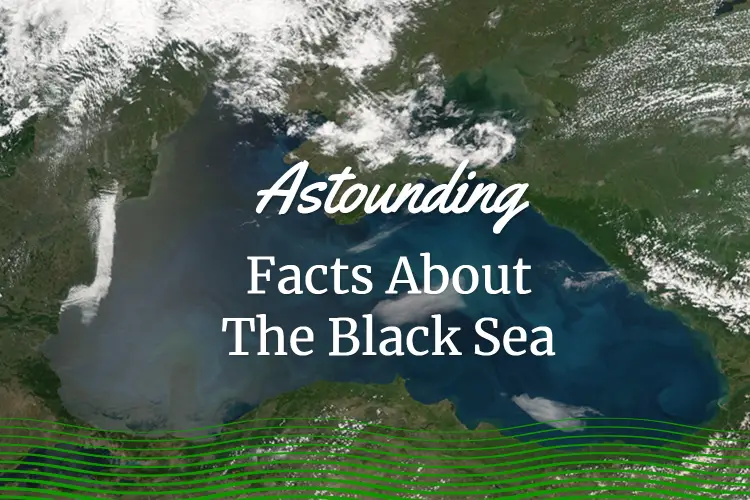
The Black Sea is one of the most popular water bodies in the world. One of the most amazing things about it is that it’s an Inland Sea. Almost everyone who has studied in schools must have read about the Black sea in his or her geography textbook and the name kind of sticks to the memory.
There is something in the name, something formidable and mysterious that holds our attention. In this article, we will find some of the astounding facts about the Black Sea.
In ancient times, the Black Sea was notoriously difficult to sail on. With the advancement of technology, this is no longer an issue.
What was once inhabited by savage tribes is now a haven for travel enthusiasts around the world with scenic beauty and diverse biome.
1) Where Is The Black Sea Located?
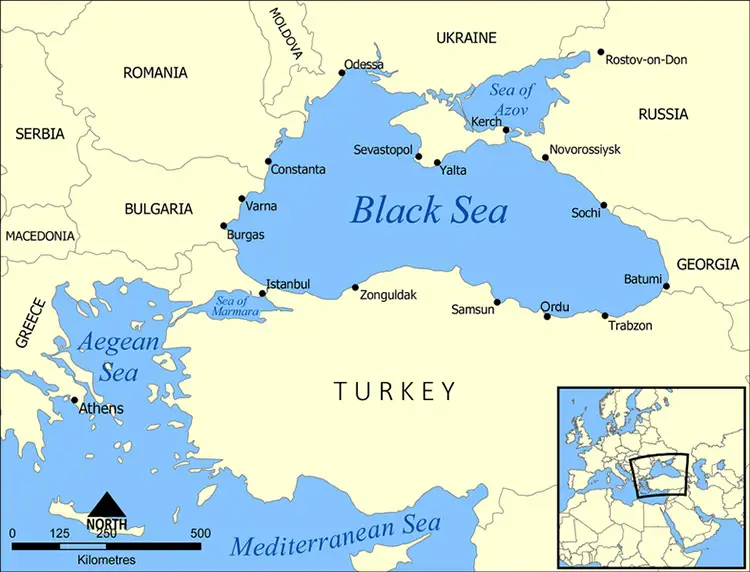
The Black Seas is located between Eastern Europe, Caucasus, and Western Asia ( See the Black Sea Map above). It is a marginal sea of the Atlantic Ocean covering an area of 436,400 sq km. At its deepest, it is 2212 mtrs.
Though the Black sea is landlocked, it gets fed by the Atlantic ocean also distant waters of the Atlantic Ocean by the Bosporus, the Sea of Marmara, the Dardanelles, the Aegean Sea, and the Mediterranean Sea. It is also connected to the Sea of Azov through Kerch Strait.
The freshwater from the Black Sea surface flows into the Mediterranean Sea, and the salty water from the latter enters the Black Sea from the lower level. Having a higher salt concentration the inflowing water is denser than the out-flowing water. The Black Sea is said to have a positive water balance with an outflow of 72 cu mi. It has a maximum depth of 7,250 feet (2,210 meters).
2) Multiple Layers
The surface-water extends from 50 to about 100 meters, below which exists a halocline that stops at the Cold Intermediate Layer (CIL). The composition of this layer is a cool salty water resultant of atmospheric cooling and decreased fluvial input. At the bottom of this layer, there is a pycnocline.
Below the pycnocline, we get to see the Deep Water mass. Here the salinity of the water rises to 22.3 PSU. There is a noticeable change in temperature as well. It is here that the oxygenated water of the upper surface changes to that devoid of dissolved oxygen. Whatever available oxygen is used up by bacteria in the process of decomposing the sunken biomass.
3) Why Is The Black Sea Called The Black Sea?
You must be curious to know why is it called the black sea?
Several theories have tried to answer this question. Let’s go through some of them:
In ancient times, people used colors to denote a particular direction. This theory seems plausible when you take into consideration the other colored seas, the Red Sea, and the White Sea. The color black represents the North direction; red indicated the South, White stood for the West and the East was light green or blue. So the Black Sea translates to the ‘Sea in the North’.
The ancient Greeks named it the Black Sea ‘inhospitable sea’ because it was challenging to navigate. Moreover, some hostile tribes inhabited the shores. But later after colonizing and developing the coasts, the Greeks renamed it the ‘hospitable sea’.
Maybe the human tendency of associating everything with colors inspired the men to name the sea the Black Sea as the color is generally associated with evil and danger, e.g., the black flag.
During the winter storms rose over the sea making its water look black and thus they started calling it the Black Sea.
The lower layers of the sea have a high concentration of hydrogen sulfide. Hence anything, whether it be animals, dead plants, or metallic objects from ships, that stays down till 150 m or more gets covered by black sludge – another reason to call it the Black Sea.
Also read: Top 12 Most Famous Sunken Ships
4) ‘There is no life in the black sea’ – Myth?
The upper layers of water in the Black Sea do not mix with the lower waters, i.e., it has a meromictic basin. In fact, the Black Sea is the world’s largest water body with a meromictic basin.
Due to this phenomenon over 90% of the water is anoxic (lacking in dissolved oxygen). As a result, there is no life in this sea except for the surface, which is comparatively oxygen-rich. However, there is still a wide variety of marine life present.
Most of them are suited to waters that are brackish and nutrient-rich. Black Sea’s inhabitants consist of phytoplankton of the group dinoflagellates, diatoms, coccolithophores, and cyanobacteria.
It also has a wide variety of common carp. Common Dolphins and Bottlenose Dolphins are not an uncommon sight either. The mammals include Beluga whales and grey seals. White sharks are also known to find their way here. You can see a detailed list of the available fishes on this Wikipedia page.
It is surprising to note that the Black Sea’s total biodiversity makes up about one-third of that of the Mediterranean Sea. Not that lifeless, is it?
5) Noah’s Ark And The Flood

The discovery was made by Dr. Robert Ballard, the same scientist who discovered the wreckage of the Titanic. Some 7000 years ago the Black Sea used to be a freshwater lake, filled with glacial melts. But there was a sudden change in the water level of the Mediterranean Sea, and thereby it created a channel that is now known as the Bosphorus.
The Black Sea widened at an outstanding rate of a mile a day as seawater, 200 times the volume of Niagara Falls, from the Mediterranean, poured into it. Nearly 100,000 square miles came underwater.
This excessive flooding has often been referred to as the great mythological flood mentioned in the story of Noah’s Ark (Chapter 6-9 in Book of Genesis) where God decided to return the Earth to its initial stage by wiping out the corruption and violence from the surface of the earth.
Noah was to build an ark which he would use to save his sons and their wives and a pair of male and female of every creature on the earth. For more reference read this Wikipedia page.
6) Maritime Crossroad
In ancient times, the Black Sea acted as the crossroads for the Balkans to the west, the Eurasian steppes to the north, the Caucasus, and Central Asia to the east, Asia Minor, and Mesopotamia to the south, and Greece to the south-west. The oldest processed gold is said to have been found in Bulgaria.
7) War Witness
The Black Sea witnessed several crucial military events of World War I and World War II – like land and naval battles.
8) Black Sea Was Once An Freshwater Sea
Is the black sea saltwater or fresh? The Black Sea was once a freshwater sea until the Mediterranean sea starting flowing into it making it salty. As a result, the freshwater fauna was destroyed gradually replaced by seawater fauna.
9) Exotic Islands for Tourists
There are some islands on the Black Sea too. Geographically speaking they fall under Bulgaria, Romania, Turkey, and Ukraine. They are attractive tourist spots that boost the economy of these countries. One becomes especially aware of the region’s dynamic ecosystem in these islands. People love coming to beautiful mountains and coasts.
It’s popularity as an archaeologist’s haunt also compels the travelers. Cruising is also quite popular in these waters. The most popular islands include the Snake Island of Ukraine. It is located near the Danube Delta. St Thomas Island in Bulgaria is known for its fish-eating water snakes.
10) A Place of Archaeological Interest
There are rumors that the dead walk on the bottom of the Black Sea. This is a gross exaggeration of a phenomenon that has a natural scientific explanation. Due to the low oxygen content in the lower layers of the water, things that have sunk to the bottom remain well preserved.
It is owing to the fact that there is hardly any organism that would help in the process of degradation. Thus it has turned out to be a favorite haunt for marine archaeologists.
Several ancient shipwrecks have been discovered that are in well-preserved condition. The Black Sea Maritime Archaeology Project team was scanning the seabed for clues. They were researching how far the water levels rose after the last ice age that happened 20,000 years ago.
This was when they stumbled upon some shipwrecks that were extraordinarily well-preserved. Belonging to the Ottoman and Byzantine empires these ships, identified by their types were at least a few thousand years old.
11) A Ticking Timebomb?
The Black Sea is a unique sea as it contains Hydrogen Sulfide (H2S). The Black Sea is the world’s largest water body containing Hydrogen Sulfide. This layer starts about 200 meters below the surface.
H2S is an environmental pollutant and poses a grave risk to the areas around the Black Sea. Bacteria are producing H2S at an alarming rate. The hydrogen sulfide-rich waters of the Black Sea pose a potential danger for the surrounding land regions. The impact of an asteroid may cause a catastrophic poisonous gas release in the atmosphere.
12) Many Names of Black Sea
Name of Black Sea
| Country | Name of Black Sea |
|---|---|
| Russia | Chornoye More |
| Ukraine | Chorne More |
| Bulgaria | Cherno More |
| Turkey | Kara Deniz |
| Georgia | Shavi Zghva |
| Romania | Marea Neagra |
13) Can You Swim In The Black Sea?
Many people ask, can you swim in the Black Sea? The fact is yes, you can swim in the Black Sea.
Conclusion
Despite all the beauty and fascination that is associated with the Black Sea, there are problems, the main reason for which is the man himself. With the rapid growth of industrialization after the 1960s, several dams have been created. The shores have become clustered with industries.
This is causing significant disruption in the ecosystem of this area. In addition to that overfishing since the 1970s has led to a decline in the macrophytes. This had indirectly affected the copepods and zooplankton whose biomass had decreased in the 1980s.
Interestingly a new species, the wart comb jelly has managed to establish itself. Something that was initially limited to a few individuals has now created biomass of one billion metric tons. A series of chain reactions have occurred due to these seemingly subtle changes. Since the species inhabiting the water has changed, its salinity and pH have changed too!
With active efforts in pollution reduction and partial regulation recovery of the Black Sea has been made possible. After the construction of new sewage treatments in Slovakia, Hungary, Romania, and Bulgaria, scientists have reported noticing signs of ecological recovery.
References:

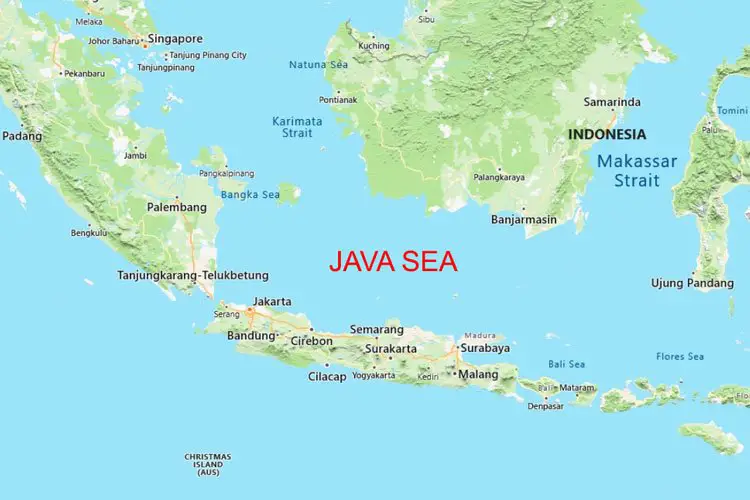
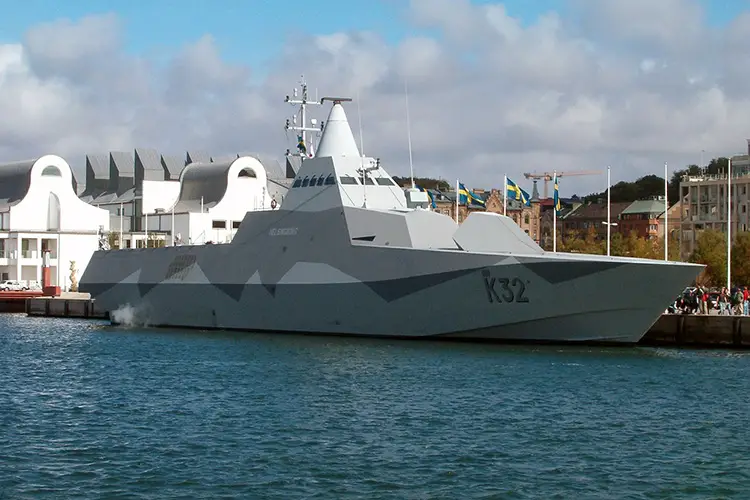
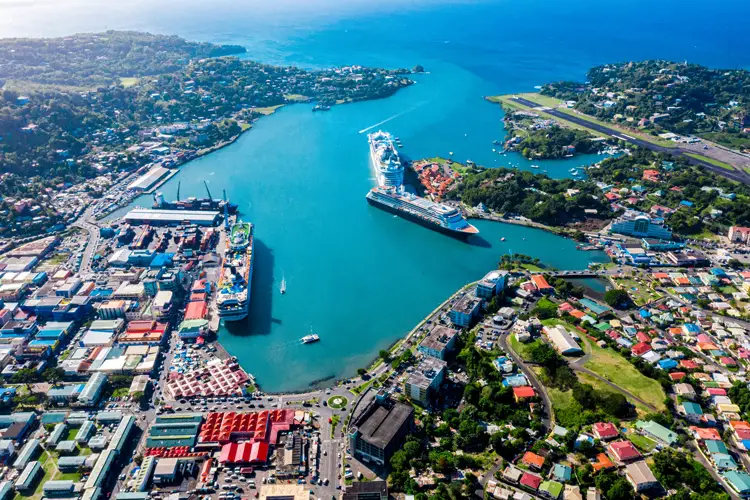
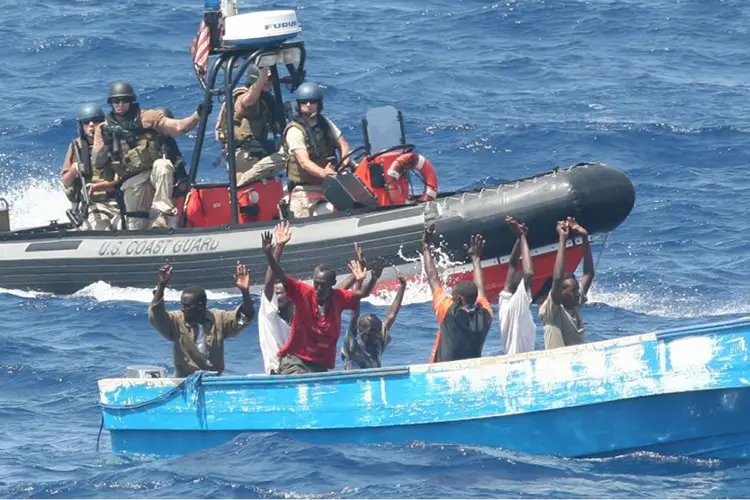

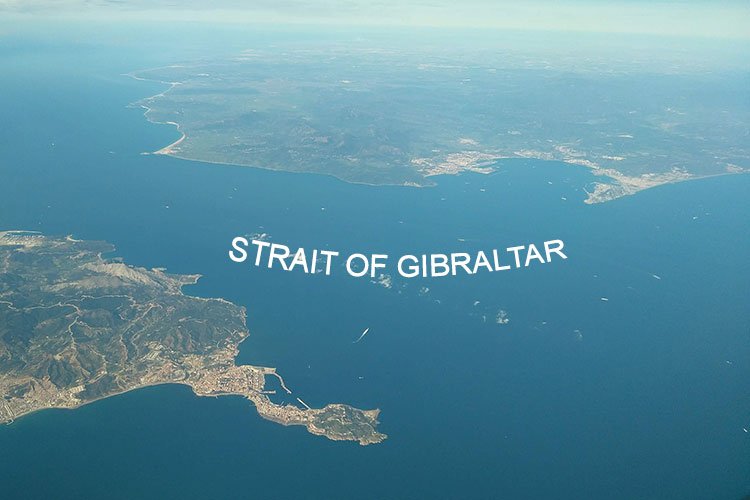

It’s in my country! Hello from Ukraine
Praying for your country!!